Yes, a family is interesting. You can get a lot of drama in the conflicts there. It’s like the sea. It seems calm, but inside, there is conflict.
– Hirokazu Kore-eda
Hirokazu Kore-eda, one of contemporary Japanese cinema’s most critically acclaimed auteurs, offers a radical rethinking of familial structures through his poignant, understated, and often melancholic narratives. From his early meditations on memory and loss to his later focus on makeshift and non-traditional family units, Kore-eda’s cinema interrogates the fundamental question: What constitutes a family? At the heart of his cinematic vision lies a quiet but radical proposition: that family is not an immutable biological or legal institution, but a malleable, emotional, and ethical construct, shaped by the lives and choices of those who inhabit it. Whether examining a traditional household, a surrogate community of social outcasts, or a fragile bond formed between lonely children, Koreeda gently but firmly challenges entrenched assumptions about kinship, duty, and belonging.
Kore-eda’s treatment of family has undergone a noticeable evolution over the years. His earlier works often engaged with familial trauma and loss within recognisably traditional frameworks, but gradually, his films began to dismantle the primacy of blood relations in favour of found families, non-normative parenting structures, and ethically ambiguous domestic arrangements.
From the heartbreak of “Nobody Knows” (2004), where a group of abandoned siblings struggle to survive in the absence of adult care, to “Shoplifters” (2018), where a loosely assembled group of outsiders forms a deeply intimate, if illegal, household, Koreeda’s films ask us to reconsider what truly binds people together. His characters – some adrift, some clinging to each other with desperation, some forging connections in defiance of legal and social expectations – show that family is as much a matter of choice, nurture, and emotional labour as it is of genetics or legality.
Central to this inquiry is Kore-eda’s profound and sustained attention to the inner lives of children, who not only populate his films as narrative pivots but also serve as the moral and emotional core of his cinematic world. Children in Kore-eda’s films are never mere background figures or symbols of innocence. Rather, they are active agents navigating adult-made worlds marked by neglect, social pressure, and structural failure. They often bear witness to the breakdown of familial and institutional responsibility, and in many instances, they assume caregiving roles themselves.
Films like “Like Father, Like Son” (2013), “I Wish” (2011), and “Monster” (2023) foreground the intelligence, emotional complexity, and perceptiveness of children, challenging adult-centric frameworks of decision-making, morality, and care. Koreeda positions childhood not as a stage to be protected or romanticised, but as a lens through which the fragility of adult ideals is laid bare.
Related Read: All Hirokazu Koreeda Movies, Ranked
Through his humanist and observational style, marked by minimalism, long takes, ambient sound, and a patient narrative tempo, Kore-eda renders these familial dramas with extraordinary nuance. His films are not declarations, but inquiries, drawing viewers into the everyday rhythms of love, loss, and survival. The subtlety of his aesthetic decisions is matched by the emotional depth of his thematic concerns.
This article seeks to analyze the evolution and complexity of Kore-eda’s cinematic families, with particular attention to his depiction of children, role reversals in caregiving, and the reconstitution of familial forms in the face of crisis, neglect, and institutional failure, situating them within broader conversations on humanism, parenthood, social precarity, and the ethics of care. In tracing these themes across landmark films such as “Nobody Knows,” “Like Father, Like Son,” “Our Little Sister,” “Shoplifters,” and “Monster,” this study will demonstrate how Koreeda’s cinema offers a compelling ethical and emotional reimagining of kinship in the contemporary world.
From Bloodlines To Bonds: The Shifting Meaning Of Family
One of the most persistent and evolving themes in Hirokazu Kore-eda’s body of work is the question of what constitutes a family. In his earlier films, there is a tacit engagement with the traditional Japanese family structure, often defined by clearly delineated roles of fatherhood, motherhood, and filial obedience.
However, as Kore-eda’s career progressed, his films began to actively dismantle these normative configurations, replacing them with provisional, emotionally constructed families forged in the interstices of loss, abandonment, and mutual need. This thematic shift reflects a growing scepticism, not only of the legal or biological criteria used to define kinship, but also of their ethical adequacy in a world where care is often found outside the nuclear household.
Koreeda’s “Like Father, Like Son” (2013) serves as a pivotal text in this transformation. The film presents a moral dilemma involving two families who discover that their sons were switched at birth. One family is upper-middle-class, urban, and emotionally distant; the other is working-class, warm, and informal. The narrative is initially driven by the idea that biological connection should dictate where the children belong. Yet as the film unfolds, it reveals the limits of this assumption. The more “successful” and wealthy father, Ryota, struggles to connect with his biological son, while his wife and the other family members display warmer, more authentic bonds with the child not born to them.
Ryota is forced to confront his own emotional inadequacy, as well as the unsettling realisation that his understanding of fatherhood has been shaped more by status and success than by affection or empathy. Kore-eda does not resolve the dilemma through legal pronouncements or moral grandstanding; instead, he guides the viewer toward the idea that shared time, mutual joy, and emotional investment are the real foundations of familial belonging.
This notion reaches its fullest and most radical expression in “Shoplifters” (2018), his Palme d’Or-winning masterpiece, where a group of social outcasts live together on the fringes of legality, forming what appears to be a family unit. None of the members are related by blood, and some are technically criminals – shoplifters, sex workers, and runaways. Yet their bond is profoundly intimate and caring. The addition of Yuri, a young girl rescued from a neglectful home, further complicates the viewer’s understanding of right and wrong.
Although the act of taking her in is technically a form of kidnapping, Kore-eda subverts moral expectations by portraying this unconventional family as more nurturing and attentive than Yuri’s biological parents. When the household is eventually discovered and dismantled, the emotional truth of their togetherness remains far more compelling than the legal definitions that fail to accommodate it. The film becomes a subtle but powerful indictment of a society that privileges form over feeling, law over love.
This trajectory, from bloodlines to bonds, signals a broader philosophical shift in Kore-eda’s work: the move from essentialist to existential definitions of family. Rather than treating family as something preordained, Kore-eda insists that it is something continually made, unmade, and remade through daily gestures, shared memories, and emotional accountability. His characters rarely speak in grand declarations; instead, they cook together, steal together, grieve together, performing, in a quiet and often desperate key, the labour of kinship. The family becomes less of a fixed unit and more of a fragile ecology, vulnerable to time, change, and external scrutiny, but no less real in its emotional intensity.
Moreover, this shift resonates beyond the domestic and into the sociopolitical. Kore-eda’s redefinition of family can be read as a response to the failures of the Japanese welfare state, the pressures of late capitalism, and the erosion of community support structures. In creating characters who construct familial bonds in the face of these failures, Kore-eda articulates a subtle but radical vision of survival through intimacy. His films offer not merely stories of broken homes and substitute households, but meditations on the possibility that the truest form of family may be the one we choose, not the one we inherit.
Children As Witnesses, Victims, And Caregivers
Children occupy a central position in Hirokazu Kore-eda’s cinema, not merely as narrative devices or symbols of innocence, but as fully fleshed-out subjects who bear witness to the failures, contradictions, and quiet devastations of adult society. His films often frame children as silent chroniclers of adult moral collapse, navigating a world shaped by abandonment, poverty, or emotional negligence.
Yet these children are never reduced to passive sufferers. Kore-eda imbues them with agency, adaptability, and interiority, offering a complex portrait of childhood as a time not only of vulnerability but of resilience and moral clarity. The child, in Kore-eda’s films, often becomes the emotional and ethical centre, quietly correcting or compensating for the failings of the adults around them.
In “Nobody Knows” (2004), perhaps Kore-eda’s most devastating study of neglected childhood, the eldest child, Akira, is left to care for his younger siblings after their mother gradually and then permanently disappears. The children, previously hidden from the landlord to avoid eviction, become invisible to society altogether. Akira’s forced maturation, his calm dignity, his desperate creativity, his quiet grief, is heartbreakingly drawn. He witnesses not just the material deprivation of poverty, but also the slow erosion of childhood itself.
Here, Kore-eda refuses sentimentality; the tragedy lies not in dramatic suffering but in the banal, day-to-day exhaustion of children trying to maintain normalcy in the face of abandonment. Akira becomes both a victim and a caregiver, a child and a proxy parent, blurring roles that society typically keeps distinct.
This reversal of adult-child roles recurs in “Shoplifters” (2018), where the child Shota is gradually socialised into the ethics of the found family, taught how to steal, how to hide, and how to love. He observes his guardians’ actions with increasing ambivalence, culminating in his own moral awakening when he decides to reject their way of life, not out of rejection of love, but in recognition of its moral ambiguity.
Like Akira, Shota becomes a moral compass, his discomfort and eventual betrayal of the family a poignant assertion of his own ethical agency. At the same time, his silence during the film’s final moments speaks volumes about the emotional complexity of his choices. The child is not simply a blank slate onto which adult values are inscribed; rather, he is a participant and interpreter in a world that constantly asks him to choose between love and law, belonging and justice.
In “Like Father, Like Son,” the child’s role is more understated but no less significant. The two young boys switched at birth adapt to their new familial settings with a sense of confused loyalty and emotional displacement. They become witnesses to adult disillusionment, quietly absorbing the shockwaves of the existential crisis experienced by their parents.
Kore-eda renders their psychological disorientation with nuance: their tentative interactions with their ‘real’ families, their playful but uneasy bonding, and their silent sadness mark a subtle critique of the idea that familial identity can be reassigned by genetics alone. These children, though not vocal about their suffering, act as emotional barometers, measuring the damage wrought by adult expectations and the violence of socially imposed categories.
The complexity of the child’s gaze is further explored in “Monster” (2023), which, in Kore-eda’s characteristic fashion, avoids a single-point narrative in favour of a Rashomon-like structure. Through shifting perspectives, including that of the child, truth is shown to be partial, elusive, and shaped by affective misunderstandings.
The children in “Monster” are not merely acted upon by adult conflicts but become the locus where miscommunications and systemic failings play out. Bullying, teacher misconduct, and parental anxiety are filtered through a child’s emotional and perceptual lens, revealing how children are often more perceptive than adults give them credit for. Moreover, the film subtly aligns the audience with the child’s confusion, forcing us to participate in the very process of misconstruing and eventually reconfiguring truth. The result is a child-centred epistemology, an insistence that children are not just subjects to be explained, but observers whose understanding of the world matters.
Also Read: Monster (2023) Movie Ending and Themes Explained
Across Kore-eda’s oeuvre, children repeatedly straddle a liminal space between dependency and autonomy. They are often more emotionally intelligent than the adults who raise them, forced to process traumas that should never have been theirs to bear. Yet Kore-eda never instrumentalises their suffering. His cinematic gaze is one of empathy, not exploitation, always calibrated to their level, always invested in their silence as much as their speech. By positioning children as witnesses, victims, and caregivers, Kore-eda interrogates adult failure, reorients the narrative gaze, and offers a profound meditation on the endurance of the human spirit even in its most formative years.
Emotional Economy And The Ethics Of Care
Hirokazu Kore-eda’s films harbour a profound sensitivity to the moral and emotional labour that binds people together, especially in the absence of institutional or biological support. His films do not simply represent family as a social structure but as a fragile, evolving economy of care: one that is measured not in legal contracts or blood ties, but in gestures of attention, acts of kindness, and shared responsibility. Kore-eda proposes an ethics of care that resists the rigidity of conventional morality, where care is a resource distributed across fault lines of poverty, social alienation, and personal trauma.
This emotional economy is most strikingly depicted in “Shoplifters” (2018), where a family of social outcasts forges a life together through small, everyday acts of affection and collaboration. Though they survive on the fringes, engaging in shoplifting, scamming, and labour under exploitative conditions, their domestic life is tender and filled with moments of genuine warmth. The grandmother’s pension supports the household, the parents teach the children to steal without getting caught, and meals are always shared.
In this home, care is a collective practice rather than an individual burden. Kore-eda challenges the audience to rethink the moral frameworks through which we judge familial legitimacy. The ethics of this “shoplifting family” do not align with legal or bourgeois norms, but the love and mutual dependence among them redefine what it means to be responsible and connected.
Kore-eda contrasts this makeshift familial warmth with the emotionally sterile and materially privileged family in “Like Father, Like Son” (2013). Ryota, a successful architect obsessed with discipline and achievement, is forced to reconsider his notions of fatherhood when he learns his biological son was switched at birth with another boy. While he initially tries to assert his claim over his biological child, he finds himself increasingly alienated from both boys.
The working-class couple who raised Ryota’s biological son may not provide luxury, but they offer emotional presence and spontaneity, qualities Ryota begins to realise he has never truly offered his own son. The emotional economy in this film is inverted: the materially affluent are emotionally impoverished, while those with fewer resources provide a richer, more attentive mode of care. Kore-eda does not moralise this reversal but uses it to expose the insufficiency of blood ties or financial stability as the foundations of parenthood.
In “Our Little Sister” (2015), Kore-eda turns his attention to sisterhood as a form of chosen kinship and emotional solidarity. Three sisters, who live together in their deceased grandmother’s house, invite their adolescent half-sister Suzu to live with them after their estranged father’s funeral. The act is spontaneous and based not on obligation, but on an impulse of empathetic recognition. The bond that develops between the sisters is filled with unspoken understanding, mutual support, and shared memory.
Domestic rituals such as cooking, eating together, walking under cherry blossoms become acts of quiet healing. The house becomes a sanctuary, not from the world, but from emotional isolation. The ethics of care here is subtle but transformative: love is expressed not through declarations, but through constancy, inclusion, and the preservation of everyday joys. Kore-eda’s camera often lingers on silences, glances, and touch, signaling that care is as much about presence as it is about action.
In “Monster” (2023), the emotional economy is complicated by miscommunication, adult projection, and institutional failure. The story, which unfolds through multiple perspectives, including that of a child named Minato, reveals how acts of care are often distorted by misunderstanding. Initially framed as a case of bullying and parental neglect, the film gradually unspools to show a profound emotional bond between two boys, Minato and Yori, who find solace in each other amidst the chaos of adult misjudgment.
The film critiques the failures of adult care, teachers who make hasty assumptions, parents who project their fears, and a school system that punishes difference. And yet, amidst this failure, the boys create a private world of trust, silence, and escape. Their mutual care, though lacking in vocabulary or adult validation, becomes a form of resistance. Kore-eda’s ethics here are not about rescuing children but about honouring their capacity to care for each other, often in ways more sincere than the adults meant to protect them.
Throughout Kore-eda’s filmography, the emotional economy of care operates outside traditional hierarchies and legal structures. Instead, it thrives in improvisation: in the act of stepping in for someone, of sharing what little one has, of offering time, space, and attention. It is a fragile economy, always at risk of collapse, yet resilient in its capacity to adapt. Kore-eda’s vision is not utopian; his characters are flawed, their relationships imperfect. But what he affirms, time and again, is that care is what makes life livable – not wealth, not lineage, not legality. His films remind us that emotional labour is not incidental to family; it is its very foundation.
The Child’s Gaze And Emotional Truth
Sometimes when you watch children, you feel that they show emotions that you, as an adult, can relate to. My desire to understand these children was very strong, particularly their actions once they were left to their own devices.
– Hirokazu Kore-eda
In Hirokazu Kore-eda’s cinema, children do not merely occupy narrative space, they see, interpret, and reshape the world with a clarity that often eludes adults. Central to his humanist filmmaking is the child’s gaze, which functions both aesthetically and ethically. By aligning the camera with the perspective of children, Kore-eda dismantles adult-centric narratives and instead privileges emotional truths that are often silent, ambiguous, or inexpressible through language. In his universe, children are not symbols of innocence or objects of pity, they are thinkers, feelers, observers, and, most importantly, truth-tellers, even when they say nothing.
This cinematic ethos is most evident in “Nobody Knows” (2004), which is based on the real-life Sugamo child abandonment case. The story is told primarily through the eyes of Akira, the eldest sibling, who takes on the role of caregiver after their mother disappears.
Kore-eda frequently frames Akira in static or medium shots, with the camera placed at the children’s eye level, creating a perspective that absorbs rather than judges. The moral outrage that the audience feels toward the mother’s abandonment is tempered by Akira’s own muted understanding of her. He never verbalises anger or despair; instead, he quietly adapts, improvises, and internalises responsibility. The camera’s intimacy with Akira allows us to inhabit a world stripped of adult rationalisations, revealing how children experience trauma not through analysis but through routines, ruptures, and fleeting joys. This child’s gaze produces a narrative of emotional realism: truthful, devastating, and devoid of melodrama.
In “I Wish” (2011), Kore-eda uses two brothers, Koichi and Ryunosuke, separated by their parents’ divorce, as lenses into the bittersweet longings of childhood. The narrative is centred around their belief that if they can witness the crossing of two bullet trains, a miracle will reunite their family. This magical thinking is not dismissed as naivety; rather, it is respected as a legitimate emotional logic, one that provides coherence in a world fractured by adult choices.
Kore-eda gently inhabits their wonderment, their planning, and their hope. The miracle, of course, never arrives in the form they expect. But in the process, the boys mature, not through disillusionment, but through emotional reconciliation. The child’s gaze here allows for a story of resilience, where agency is quietly reclaimed not through confrontation, but through observation, patience, and acceptance.
“Monster” (2023) deepens Kore-eda’s commitment to child subjectivity by constructing a fragmented narrative seen through different perspectives, including, crucially, that of Minato, the young boy at the centre of a moral panic and alleged bullying. The adult world projects meaning onto Minato’s behaviour, but Kore-eda withholds the full truth until the child’s version of the story is finally shown. This shift reveals how adults – teachers, parents, institutions, fail to see or hear the emotional reality of children, obscured by assumptions and procedural thinking.
Also Read: The 25 Best Non-English Films of 2016
When we finally see the world through Minato’s eyes, the emotional landscape is radically different: there is confusion, pain, affection, and a desperate desire to protect a tender friendship with Yori. The child’s gaze in “Monster” is revelatory, it destabilises the adult narrative and demands ethical revaluation. Through this technique, Kore-eda critiques systems that render children voiceless and asserts the necessity of listening to what children feel, not just what they say.
Even in Kore-eda’s gentler works, such as “After the Storm” (2016) or “Our Little Sister” (2015), the emotional truths perceived by children often outstrip the adults’ own comprehension. In “After the Storm,” the young son, Shingo, intuitively perceives the sadness and lost dreams of his divorced father, Ryota, and their tentative reconnection unfolds not through dialogue but through shared presence during a stormy night. The child’s gaze is never intrusive, it is attentive, waiting, and forgiving. Similarly, in “Our Little Sister,” Suzu, newly integrated into her half-sisters’ lives, watches, listens, and absorbs the rhythms of this reconstructed family. Her quiet transformation is not orchestrated by others but grows organically as she begins to feel safe, loved, and seen.
Kore-eda’s cinematic language, a reliance on long takes, natural lighting, ambient sound, and non-invasive editing, supports this child-centred perspective. His camera does not direct attention but invites contemplation, allowing viewers to dwell in the temporality and consciousness of children. In doing so, Kore-eda disrupts the adult gaze that dominates much of global cinema. He offers instead a politics of looking grounded in empathy, trust, and humility.
The child’s gaze in Kore-eda’s films is thus a philosophical position as much as an aesthetic one. It reminds us that truth is not always verbal, that feeling is a form of knowing, and that the world, as seen through a child’s eyes, may hold a deeper wisdom than adult logic can grasp. In a cinematic world where children are often plot devices or background presences, Kore-eda’s child characters claim full subjectivity, insisting not only on being seen, but on seeing.
Rethinking Family Through Kore-eda’s Cinema
Brian Tallerico rightfully called Kore-eda, “One of history’s best filmmakers at analysing what the word ‘family’ even means.” In an era where the traditional nuclear family is both valorised and destabilised across cultures, Hirokazu Kore-eda’s films gently dismantle our assumptions about what constitutes a family. He displaces patriarchal, biological, and state-sanctioned definitions of family in favour of ethical, emotional, and chosen bonds. His vision offers fluid, makeshift, and sustaining bonds that often emerge in the absence of traditional kinship.
Whether it is a group of shoplifters living together on the margins (“Shoplifters”), children abandoned by their mother (“Nobody Knows”), or two boys from divorced families seeking reunion (“I Wish”), Kore-eda reminds us that familial intimacy is not guaranteed by blood but cultivated through care, attention, and time. This rethinking is not just thematic, it is formally embedded in his cinema. His long takes, unobtrusive editing, and naturalistic performances allow relationships to unfold in real time, evoking a sense of dailiness that foregrounds the small, unnoticed gestures of familial love and labour. As viewers, we are not positioned to judge these unconventional arrangements but to inhabit them, to feel their tenderness, fragility, and resilience.
His children, thoughtful, self-aware, burdened by adult failure, are not just tragic figures or blank slates, but embodied consciousnesses, quietly observing, internalising, resisting, and adapting. Through them, Kore-eda interrogates the systems that neglect the vulnerable and the invisible. In reimagining family not as a given but as a practice, Kore-eda’s films encourage us to rethink our own understandings of intimacy, belonging, and responsibility. He invites us to see that family, at its most profound, is bound not by blood, but by grace. It is less about who we are born to and more about who we choose to care for and who cares for us in return.

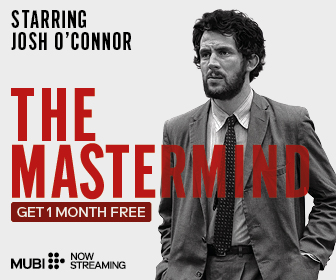
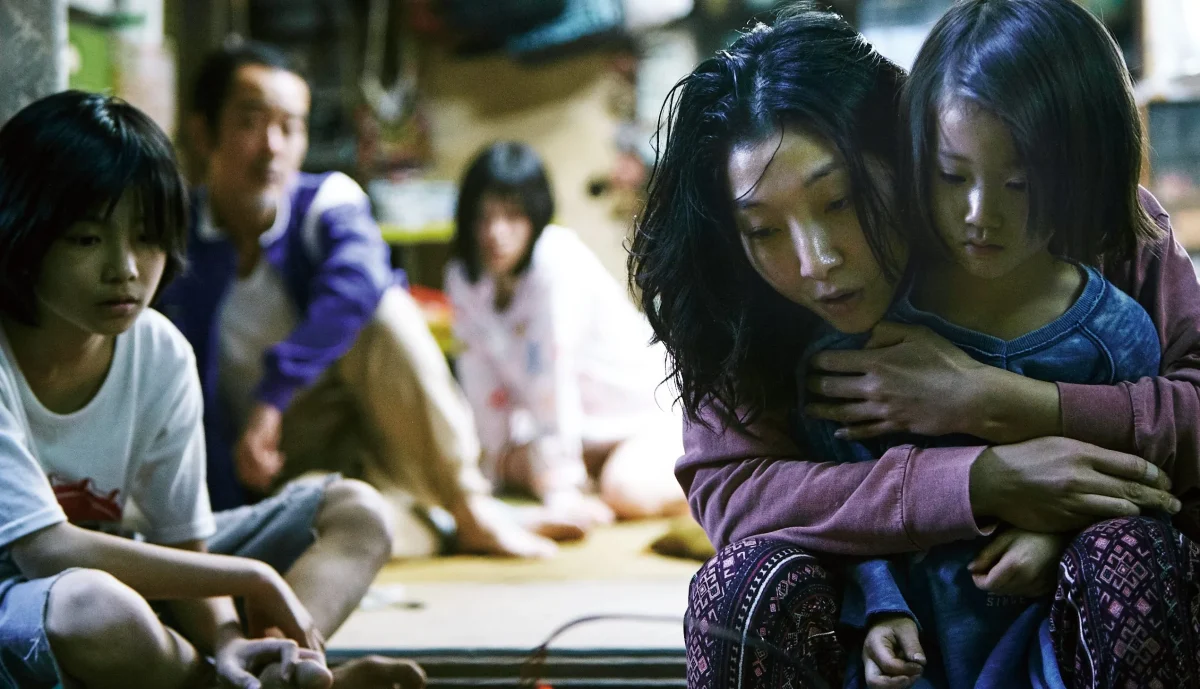
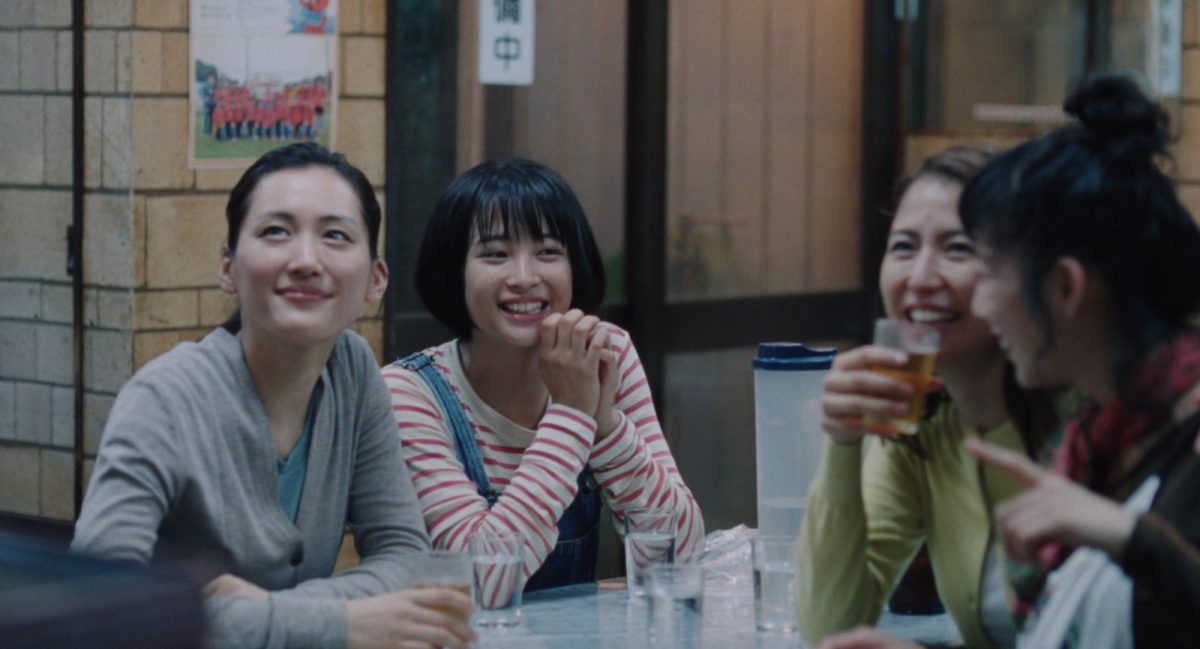


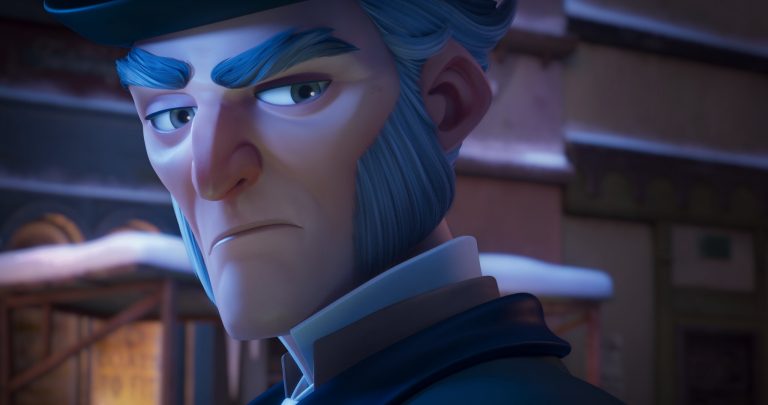

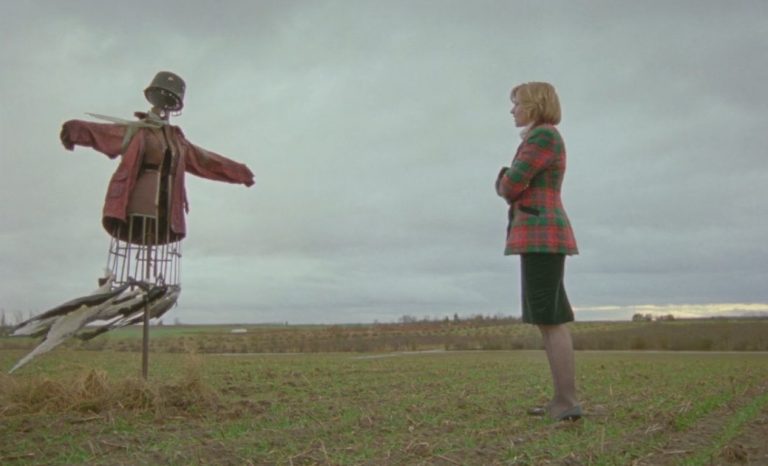

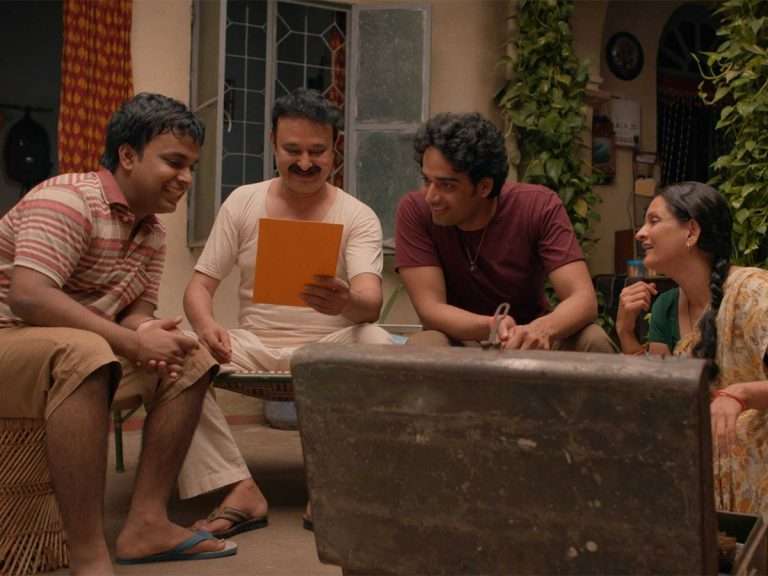
![An Audience of Chairs [2019] Review: Good Intentions and Unfulfilled Potential](https://79468c92.delivery.rocketcdn.me/wp-content/uploads/2019/10/An-Audience-of-Chairs-768x512.jpg)